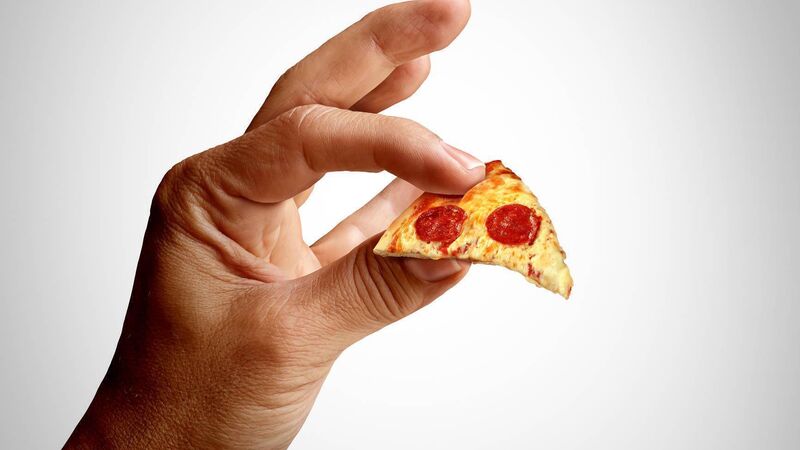The cost of food has continued to increase for over 18 months and shopping receipts carry an extra bit of ouch factor for us all. Have you left the supermarket or stacked up your food stores feeling even more hard done by lately? If you feel that you’re maybe just not taking home the same amount of shopping as you used to then you’re not on your own.
“Shrinkflation” may be the answer to your increasing shelf space and diminishing grocery stocks.
According to the Collins English Dictionary, the word “shrinkflation” is a noun which describes: A reduction in the size of an item of packaged food, such as a chocolate bar, while the price remains the same.
For manufacturers, it’s a way of maintaining profit levels by giving the perception of that a product remains the same.
You might have opened a pack of crisps recently and noticed that once settled, the contents look sparser than they used to. Or maybe, the container of coffee pods that you enjoy is lighter than a few years ago.
“Shrinkflation” is generally used to describe package downsizing, but manufacturers may also alter ingredients to fine-tune their profit levels. This results in a poorer quality product on the shelves that costs the same as the original.
The cost of living crisis has affected us all and it has become stark at the supermarket tills in particular.
This is because our grocery shopping is done with “discretionary” income, which is the money we have left over after the bills are paid.
When the price of electricity, heat, and fuelling our cars, never mind rent/mortgage started to rise the first place I noticed the pinch was in the shopping budget.
I had less money to spend each week and I was having to be more inventive to stay on track or not overspend. Then I started to come home with less, even when buying the exact same products each week.
A bag of apples used to hold six, now it contained five but still cost the same. “Shrinkflation” was eroding at my value for money in a very sneaky way.
AN EXTRA EXPENSE
Shrinkflation is not just an Irish phenomenon. Worldwide shoppers are noticing less value for money.
Reddit has a specific subreddit where people detail where they have noticed the extreme effects. “What is the point of all that extra space,” one Redditor says as they notice that over 20% of a pack of rainbow liquorice is empty.
“Pringles have gotten so small,” another writes, accompanying a clear picture of a stack of the popular crisps inside a tube.
Don’t just take it from me, last week Irish Examiner readers were surveyed for their experience and asked if they had seen the signs of “shrinkflation” in the shops. I was able to correlate their feedback with my own supermarket receipts to crosscheck.
Eileen Tansley said: “Tassimo coffee pods. They used to sell eight packs, now it’s six packs, same price.
“As it happens my husband is very partial to Tassimo ‘Costa Americano’ pods which used to come in a pack of 16. The packages now hold 12 pods and yet cost the same as they did two years ago, technically making the individual coffee pods 25% more expensive to buy.”
Theresa Cleary says: “Pedigree dental sticks used to have seven sticks but now only five for the same and higher price in some places.
“This issue seems to be specific to a particular size of the most popular dental sticks for medium-sized dogs, but it’s an extra expense nonetheless.”
Dan Rea has an issue with laundry scent booster: “Lenor unstoppables. In wash scent boosters. Original plastic container, 264g. New environmentally friendly cardboard pack, 245grms. Cardboard appears either the same or slightly larger than original plastic container.”
Last year in the Irish Examiner, I noted that the older plastic containers of these scent boosters were on sale before the cardboard packaging was introduced. While it’s 19g less in content size than previously, it certainly adds up for the manufacturer in economies of scale.
CLEANING UP?
Laura McNally has also noticed the effects of Shrinkflation in her cleaning materials: “I have bought the finish classic dishwashing tablets 110 for €9.99 for the past few years. I bought an 70 pack this week for €7.99. Same type of box just smaller.
“The cost of one dishwasher tablet increased from 9.1c to 11.4c. That’s an increase of just about 20% according to my calculations.
“What is striking is that the cost of running a dishwasher has also increased thanks to higher energy prices. Maybe it’s cheaper to do the washing by hand all over again.”
We are definitely beginning to pay a higher price for convenience.
It’s not all bad news though.
Certain products are unlikely to ever change their size, or if they did, there would be uproar.
Anybody for slightly-less than a pint of milk?
How about a not-quite half a pound of butter?
Half a dozen eggs, minus one?
When customers associate fixed weight or volume with a food item it’s more difficult to confuse with smaller pack sizes.
We are more likely experience the effects of “shrinkflation” when we buy prepackaged or processed items.
Purchasing weight-based loose items will insulate us from the effects of smaller package sizes and we are more likely to notice price inflation more.
Manufacturers and retailers will argue that by reducing pack sizes slightly, they have been able to make savings for us all and insulate consumers from significant price increases. What do you think? Should we be happier with smaller packaging and stealthy price rises?
Personally, I’d rather have a realistic expectation that the quality and size of a product I depend on is consistent. Maybe you do too.
How low can a package size go and a brand still retain customer loyalty?
In 2011 a tin of Cadburys Roses was 975g, this year a tin is 550g in weight and available to buy from Tesco this week for Clubcard holders priced at €6.50. Are they still worth it?

Subscribe to access all of the Irish Examiner.
Try unlimited access from only €1.50 a week
Already a subscriber? Sign in
CONNECT WITH US TODAY
Be the first to know the latest news and updates







